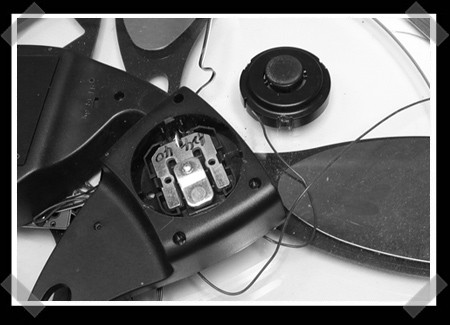
[David Steeman] sent us this project. He uses a consumer scale to measure rocket engine thrust. He wanted to be able to map the thrust curve of his homemade rocket motors to determine whether they are meeting the design goals. It does this by measuring the force applied by the rocket engine via a microcontroller that records it in a text file on a computer. He then analyzes this data in an Excel spreadsheet.
The sensors were harvested from a consumer scale while the rest of the electronics were built by hand. He’s using a PIC 18F2550 microcontroller which has a built in USB interface. He has breakdowns of each piece with detailed information on how it works as well as some nice pictures. There is also a list of future improvements that he would like to do such as increasing sample speed, integrating it with the ignition, and decreasing the physical size. Files for the schematic, firmware, and excel spreadsheet are available for download at the bottom of the page, so keep scrolling down.















The article said a PIC 18F2550, not a PIC 1852550.
Thanks forrest. It has been corrected.
Bravo to them. That’s a really nifty and easy way to add some good information to your hobby
:thumbsup:
there was already the same project done by a german hacker:
http://fingers-welt.de/gallerie/eigen/elektro/waage/waage.htm
AFAIK you already posted a project of him hete
I once build something like this for a friend, but out method was a bit different; we used a slide and a spring with a known stiffness constant, and used the guts of an old ball mouse and a very simple hacked together program to measure the displacement. We used this to measure the impulse of bottle rockets.
You just need to get relative movements, not absolute position, to prevent clipping at the edge of the screen.
Did a similar project as a high school science project 20+ years ago.
We attached a long arm to an Atari video game paddle and attached the rocket to the end of the arm. When the rocket fired, it moved the arm and turned the paddle. A couple of springs resisted the thrust.
Data was collected 116 x per second on an apple IIe.
Our thrust curves were nonsense until we finally (it took us high school kids weeks) figured out that we had to subtract the sinusoidal oscillation of the spring.
An evolved version of this rocket motor test system is on http://www.soldersmell.com/blog/?p=20